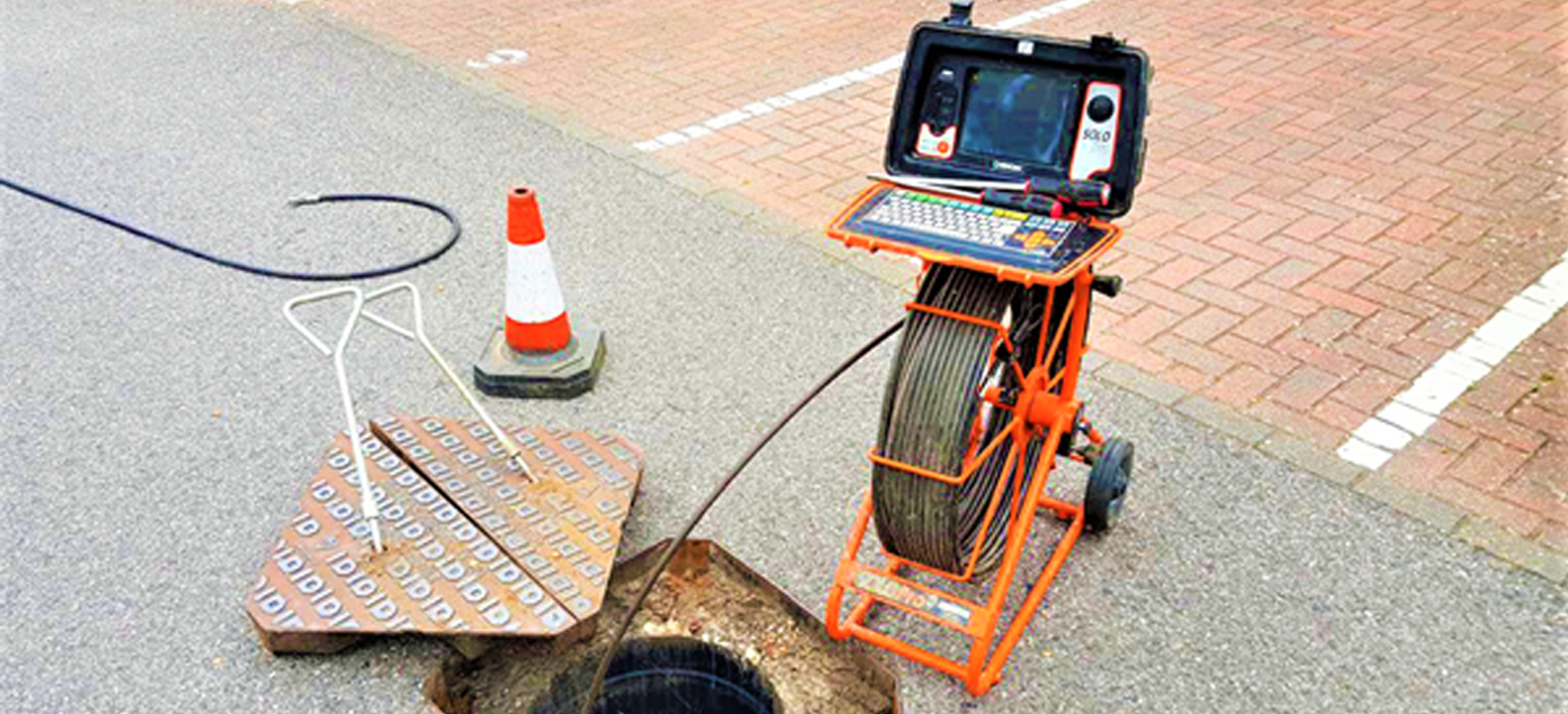CCTV Drain Survey London: What’s Included and How It Works

If your drains are slow, backing up, or giving off a bad smell, the problem could be hidden underground. Many homeowners and property managers in London face this issue every year. Fixing it blindly can cost thousands. A CCTV drain survey gives you a way to see exactly what’s happening below the surface before anything gets worse.
Intersect provides CCTV drain surveys in London using a small camera to check your drains without digging up your property. You’ll get a clear report that shows what’s wrong and where the issue is located.
Whether you’re looking for the right drain survey provider to hire or just want to know what this service is all about, this guide has all the answers.
What’s Included in a CCTV Drain Survey
A CCTV Drain Survey uses a camera that travels through your pipes and records everything inside. This helps you find the cause of:
- Blocked or slow drains
- Cracked or collapsed pipes
- Tree roots breaking into the system
- Scale, grease, or fat build-up
- Bad connections or leaks
But a CCTV drain survey goes beyond just sending a camera into a pipe to find faults. It includes a detailed inspection that collects data and gives you a report that can be used to fix the problem. Here’s what you can expect when you book a CCTV drain survey London:
1. Pre-Survey Check
The inspection team starts by checking your property layout. They find all access points, such as manholes or rodding points. Some older London homes have sealed covers or limited access. In those cases, temporary entry points can be made safely.
During this stage, the surveyor checks:
- Pipe size and material (clay, PVC, or cast iron)
- Known problem areas
- Previous repairs or blockages
This step helps the technician plan how to complete the survey efficiently.
2. Setting Up the Equipment
After checking access, the team sets up the camera equipment. Different tools are used depending on the job:
- Push-rod cameras for smaller drains in homes
- Crawler cameras for large or long pipes in commercial buildings
- Pan-and-tilt cameras for a close, detailed look
The cameras are fitted with bright lights so you can see clearly even in dark, dirty pipes. They also measure how far the camera travels, which helps pinpoint the location of each defect.
3. Recording the Inspection
Next, the camera goes into the drain. The technician controls it from the surface while watching a live video feed. The footage shows what’s inside your pipes as the camera moves through them.
The operator will look for signs of:
- Cracks or broken pipe walls
- Blockages caused by waste or roots
- Water sitting still, showing a sagging or collapsed section
- Loose joints or open connections
Each issue is marked with the exact distance from the entry point. This makes it easy to find the spot later if you’ll be needing repairs.
4. Finding and Rating the Problems
The CCTV drain surveyor reviews the footage and uses a rating system to grade each defect. The grades show how serious each problem is and whether it needs urgent repair.
Typical issues include:
- Structural damage like fractures or collapses
- Service issues like root invasion or heavy scale
- Construction errors like bad joints or misconnected pipes
This grading helps you decide which repairs to prioritise. You can see the full picture instead of guessing where the problem lies.
5. Mapping Your Drain Layout
Another useful part of a CCTV Drain Survey is the drainage map. Using tracing tools, the surveyor creates a drawing that shows:
- The direction of water flow
- Depths and pipe sizes
- Where manholes and connections are
- How your drains link to the main sewer
This information is valuable if you plan to build an extension or carry out landscaping. It helps avoid damaging underground pipes during construction.
6. Reviewing and Reporting
Once all footage is collected, it’s reviewed in detail. The service provider then creates a digital report that includes:
- High-quality images of the main defects
- A full summary of the drain condition
- Step-by-step recommendations for repair
- A video file showing the inspection
- A layout map in PDF format
The report is written in simple terms so you can understand it easily. For builders or engineers, the report can include extra details such as flow direction and pipe depth.
7. Post-Survey Discussion
After you receive the report, the technician walks you through the results. You’ll understand what was found, what it means, and what can be done next.
If repairs are needed, you’ll be advised on options such as drain relining, cleaning, or small excavations. The aim is to solve the issue quickly and prevent future damage.
How a CCTV Drain Survey Works Step by Step
From the moment you contact the surveyor, a CCTV Drain Survey follows a simple process as summarised below:
- Initial Booking
You give the surveyor details about your property and the problem. - Arrival and Setup
The technician arrives and checks all access points. - Cleaning (if required)
A quick jet wash may be done to clear blockages for better visibility. - Camera Inspection
The camera moves through your drains, recording the whole journey. - Live Review
The technician watches the footage and takes notes on issues found. - Data Collection
All footage and notes are saved for analysis. - Report Creation
The footage is reviewed, and a detailed report is made. - Final Review
You go through the report and discuss any next steps.
Most surveys take between one and four hours, depending on the size of your property and the length of the drainage system.
When Should You Hire a CCTV Drain Surveyor?
Below are times when it’s smart to get a CCTV drain survey done:
Before Buying a Property
It helps you spot hidden issues that could become costly after you move in. The report can also support negotiations with the seller.
Before Building Work
If you’re planning an extension, Thames Water requires a CCTV report for build-over approval. It confirms your new structure won’t damage existing drains.
After Flooding or Damage
If your drains back up or collapse, CCTV footage can show insurers the exact cause and location of the problem. You may need to provide the report to your insurance company.
For Regular Maintenance
Property owners and landlords often schedule surveys once a year. It keeps their systems in check and avoids sudden emergencies.
Factors That Affect the Cost of a CCTV Drain Survey in London
Property Type and Access
Big commercial buildings often take longer to inspect than small homes. Some older properties may also have blocked or hidden manholes, which can add time to the job.
Length and Size of Drains
Longer or wider drains need more advanced cameras and more time for inspection.
Drain Condition
If the system is clogged or flooded, it may need cleaning before the camera can be used. That extra step increases the cost slightly.
Level of Detail Needed
Some people only need a simple video, while others need a full written report with maps and recommendations. Reports for construction or insurance claims often take longer to prepare.
Purpose of the Survey
If you’re buying a house, planning an extension, or making an insurance claim, each type of survey has its own requirements.
In general, residential CCTV surveys in London range from £120 to £300. Commercial surveys cost more because they cover larger and more complex systems. Spending this small amount upfront can save thousands in future repair costs.
How to Choose the Right CCTV Drain Survey Provider
Not every company provides the same level of service. To make sure you get accurate results, you should look for these qualities:
- Certification and Memberships
The company should follow WRc or NADC inspection standards. - Equipment Quality
Ask what type of cameras are used and if they record in high definition. - Report Clarity
The report should include photos, locations, and easy-to-follow advice. - Turnaround Time
Ask how long it takes to receive the report after the survey. - Transparent Pricing
Make sure cleaning, footage, and report delivery are included in the quote. - Customer Reviews
Look for feedback from people who have used their services before.
A good service provider focuses on accuracy, clear reporting, and customer understanding rather than just speed or price.
Common Myths About CCTV Drain Surveys
There are a few ideas that often stop people from booking a drain survey. Let’s clear them up.
“You only need a survey if drains are blocked.”
That’s not true. Many serious issues start small and show no signs for months. A regular CCTV inspection helps catch early damage before it spreads.
“Every survey gives the same results.”
Some companies only hand over a video. Others provide a full written report with detailed images, diagrams, and repair advice. The quality of the report makes a big difference.
“It’s too expensive.”
The cost of a survey is low compared to excavation or flood damage. Early detection always saves more in the long run.
“Any plumber can do it.”
CCTV drain surveys need special skills and training. Only qualified drainage technicians can analyse the footage and report it correctly.
Why a CCTV Drain Survey is Worth It
With a CCTV drain survey, you don’t have to guess what the problem is. Instead, you get visual proof of your drain’s condition. The report helps you plan repairs, comply with regulations, and protect your property.
And if you’re an investor or home buyer, you may see reasons why the property may or may not be a good investment, saving you money in the long run.
Get in Touch with a CCTV Drain Surveyor Near You
If you’re looking for the best CCTV drain surveyors in London, you can’t go wrong with Intersect. You gain access to trained technicians who use advanced cameras and simple reporting to make the process clear and stress-free.
Whether you’re doing construction, buying property, or just want to prevent future issues, book a CCTV drain survey now and get a full view of your drainage system.



